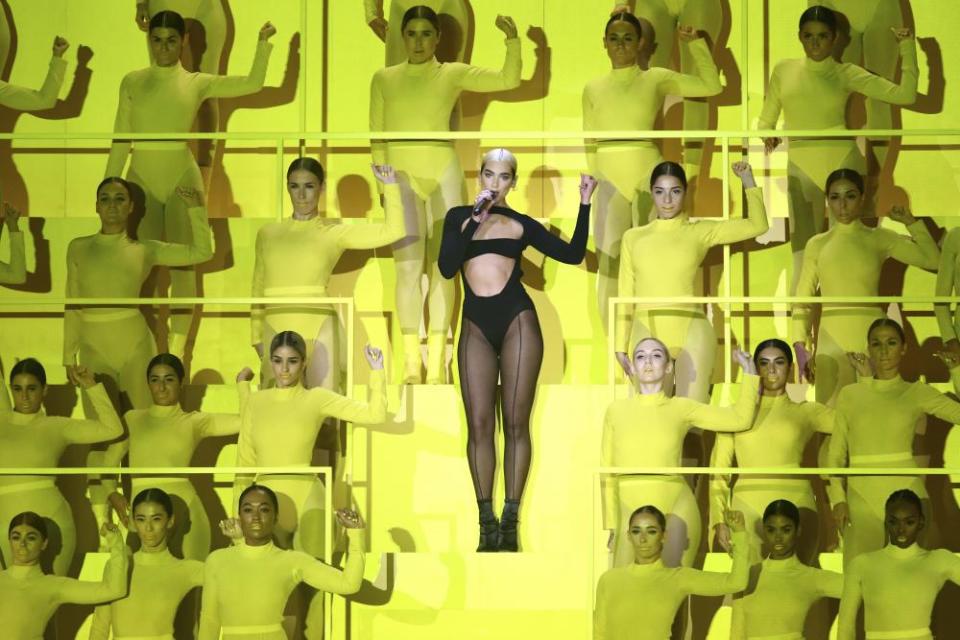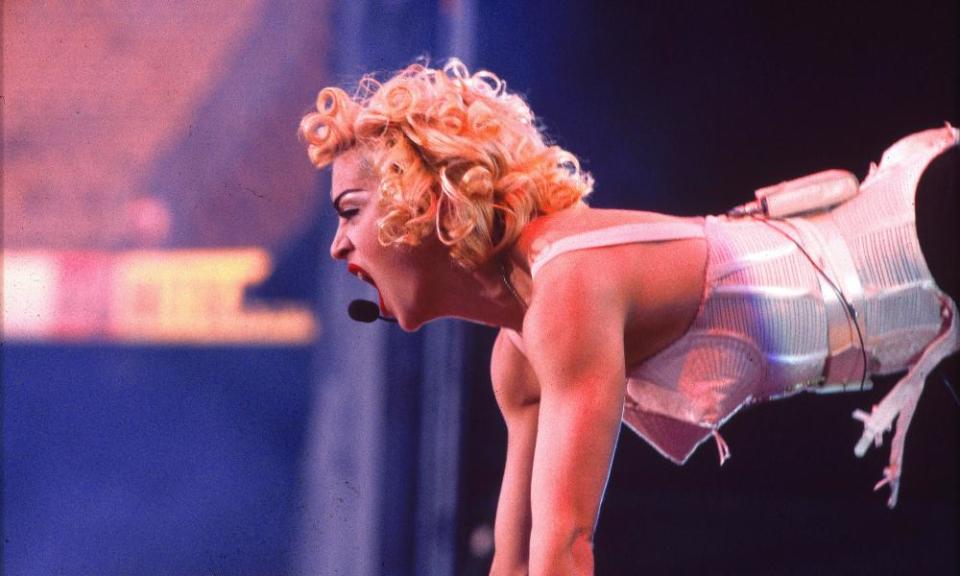Rock that body: how the Mugler catsuit is shaping pop

Pop music has a new uniform. The feline, figure-hugging Mugler bodysuit, with its generous cutouts, has become ubiquitous with the biggest female singers. Billie Eilish wore one for her recent Vogue cover shoot, Beyoncé was in one on the cover of the same magazine’s December issue, as was Dua Lipa at the MTV Europe music awards, while Miley Cyrus wore hers accessorised with silver jewellery at the I Heart Festival and Cardi B and Megan Thee Stallion wore versions in, respectively, lime green and purple for one of the many costume changes in the WAP video.
“The bodysuit and what it represents is powerful,” says Casey Cadwallader, who has been the creative director at Mugler since 2017. “People see how relevant it is – being really open-minded, embracing diversity, embracing different expressions of gender.”
The garment, which debuted at the autumn/winter 2020 Mugler show, is made of mesh and lace opaque panels, which create a visual illusion of curves. It is a very Instagram-era piece of clothing. But it’s also classic Mugler (who designed Kim Kardashian’s famous “wet look” Met gala dress in 2019, as well as the outfits for George Michael’s Too Funky video and Demi Moore’s little black dress in Indecent Proposal).
the magnificent beyonce for vogue. pic.twitter.com/SxDYWxEZrb
— biel (@shiltbwy) May 3, 2021
Indeed, the visual popularity of the item is seen as the natural successor to the more angular, gladiatorial corset-leotard, which first rose to prominence after Madonna wore Jean Paul Gaultier’s golden bustier topped with a cone bra during her 1990 Blond Ambition tour. Later, everyone from Rihanna and Little Mix (and yes, Beyoncé) wore them. Gaultier said that Madonna was attracted to his designs for the way they played with gender. “Madonna liked my clothes because they combine the masculine and the feminine,” he told the New York Times.

Almost 30 years after Madonna first made it popular, the Mugler bodysuit, alongside Marine Serre’s moon crescent catsuit, is a sharp left turn away from the masculine elements of that silhouette to something much softer, recalling the leotards Kate Bush wore early in her career. “There’s a certain femininity and a certain anatomy to the clothes that has to be respected or else it won’t look Mugler and it won’t have the same meaning,” says Cadwallader.
Eilish drew criticism for revealing her new look, which included the Mugler catsuit, in the latest issue of Vogue. Fans accused her of looking “polished”. But, as she says in the interview: “Showing your body and showing your skin – or not – should not take any respect away from you.”
Indeed, Cadwallader wants Mugler to be a place where: “People feel very welcome, appreciated and beautiful who didn’t necessarily think that fashion was for them. I really want to show that Mugler is there for everybody,” he says. When plus-size French singer Yseult wore the bodysuit at the French equivalent of the Brits (the Victoires de la Musique) it was a moment for her to reclaim how she felt about herself through costume.
“I’m remembering how I used to feel in my body and how I used to speak of my body with disgust and bitterness, a lot of bitterness. Today, with a lot of work, I’ve grown to love and hate it,” she told Vogue. “This was a moment where [Yseult] did not want to hide but to reveal herself to the audience,” said Cadwallader about the performance. “[Bodysuits] have this duality in which they cover the entire body, from toe to fingertip and yet show all. Ultimately, the body is what makes the look.”
Watch: Colourful fashion tips

